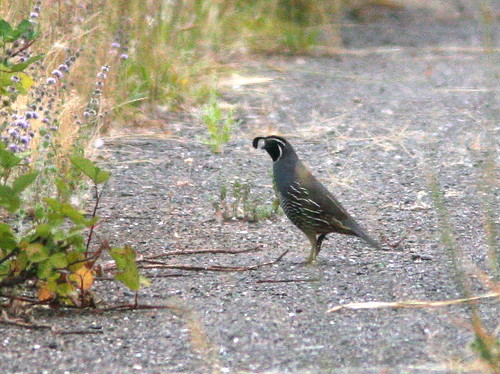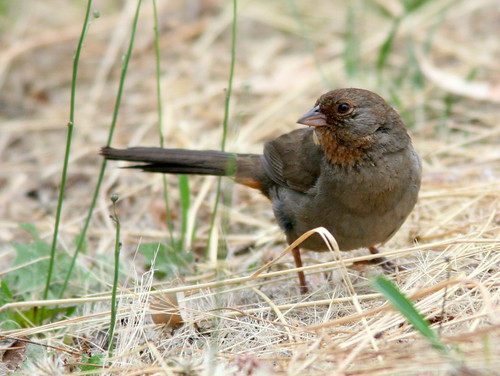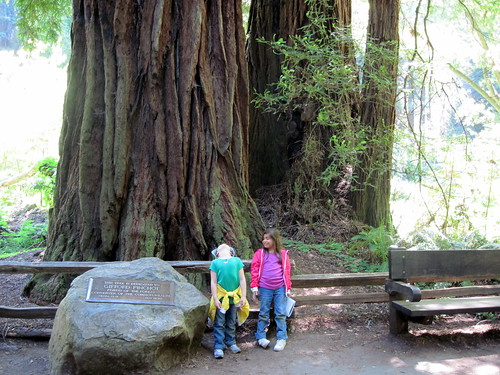Posted by: Ken @ 3:28 pm
(This is a continuation of the previous post)
We topped off our two week 50th Anniversary trip with 5 nights at the Hilton Sonoma Wine Country Hotel in Santa Rosa, California. Transportation and lodging were a gift from our younger daughter and her husband, in exchange for our agreement to mind their two daughters while they attended the wedding (and several associated gatherings) of a friend and business associate. Needless to say, we welcomed the task and found it to be a most pleasant “burden.” The younger set enjoyed sleeping late on their vacation, while we persisted in our habit of being up and out at the crack of dawn. This provided a nice window of “prime time” for birding. Since we did not have a car, we had to find a nearby place to bird.
Mornings started out quite cool and foggy, but once the skies cleared, the temperature rose rapidly, and Our granddaughters enjoyed the hotel pool:
As soon as we arrived at the hotel, Mary Lou and I scouted out the neighborhood in search of the nearest patch of natural habitat that might be a convenient birding site. Only about a block from the hotel entrance, we found an undeveloped hill that was covered by grass and had patches of shrubs and trees. Blackberry thickets laden with near-ripe fruit bordered an old trail that led to a long-abandoned building. We were greeted by California Towhees and two California Quail. Unfortunately, I did not bring my camera, so the above image was taken from a much greater distance a couple of days later,
We had birded in California a couple of times before, so we did not expect to see any new species. Since we tend to be more “bird-watchers” than compulsive “listers,” this was not a concern. Birding in a new and less familiar location is always exciting, and we looked forward to get re-acquainted with species not present back in our Florida and Illinois homes.
Almost immediately, we heard the calls of a colony of Acorn Woodpeckers. This fascinating species breeds cooperatively, with one or two dominant males in charge of a group of subordinate males and females (the latter usually siblings from a previous brood). All assist in maintaining the colony. They store acorns, as well as other nuts and seeds, individually in holes they drill in the bark of trees in their territory. Most of the holes were created by many previous generations of Acorn Woodpeckers, and are used year after year. Telephone poles and fence posts, and even cracks in boulders and stone walls may serve as “granaries.” They are even known to drill storage holes into rock themselves. For much more information about this behavior, see this article (PDF) from the University of New Mexico SORA collection of ornithology literature: http://elibrary.unm.edu/sora/wb/v23n04/p0165-p0170.pdf
Two Acorn Woodpeckers took positions at the top of one of their larder trees:
A Spotted Towhee sang a weak trill. Its bright red eyes differed from the yellow eyes of the closely related Eastern Towhees in South Florida: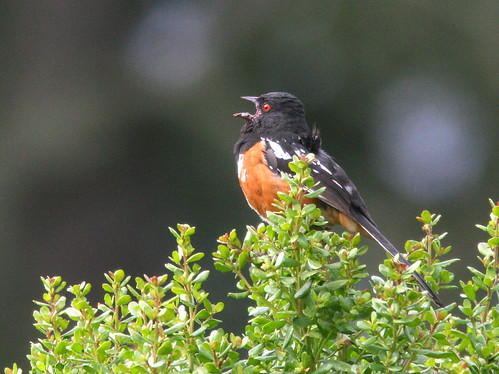
The area surrounding our new-found birding “patch” is mostly developed, with office buildings and medical clinics, as well as vineyards. Open land appeared to be fragmented, and our birding spot was an island of wildness.
We did see several deer, including this young Black-tailed buck. This species is smaller and darker than the Mule Deer (which is believed to have evolved thousands of years ago from hybrids of White-tailed and Black-tailed Deer):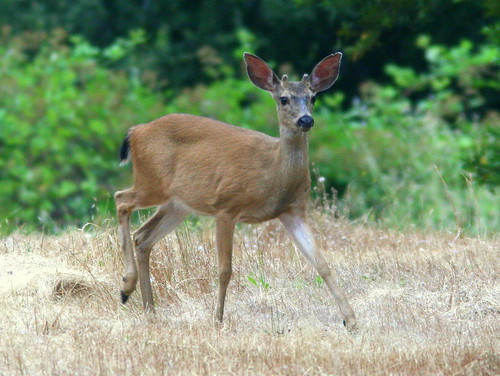
On our last morning in Santa Rosa we got a late start, and the day quickly turned quite warm. Mary Lou was anxious to get back to bring the girls swimming, but I stayed out for another hour. I was rewarded by the appearance of a small flycatcher. It had the tear-drop shaped eye ring of the Cordillerian Flycatcher, a familiar and common species around our former home in the mountains of New Mexico. However, this was my first sighting of a West Coast specialty, the Pacific-slope Flycatcher. I felt bad that Mary Lou missed out on a “lifer.”
The Pacific-slope Flycatcher was classified as a subspecies of the Cordillerian until taxonomists “split” it into a new species. But for its unique calls and song, it is practically indistinguishable from its eastern counterpart:
This view better displays the “tear drop” eye ring: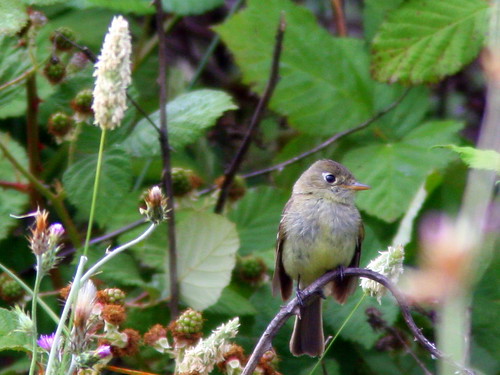
That same morning, a few swifts flew over. I paid them little mind until I realized that they were not Chimney Swifts, so common east of the Rocky Mountains, but Vaux’s (rhymes with “boxes”) Swifts. While they are smaller than the Chimney Swift, and are said to fly with more rapid wingbeats, all I could say, without any basis for comparison, is that they did fly fast and were small– so fast and small that my attempts to capture photos of them produced only blue sky and a few clouds! We had seen the species before from a distance, flying into a chimney roost in Portland, Oregon, but that view was unsatisfactory. I had to go back to my records to see if we had ever entered it as a new “life” bird. We had not, so with some hesitancy I added it this time as my Life Bird Number 574. At my age, I believe there is little hope for me to reach the 600 species milestone.
We saw a few Bewick’s Wrens, but they were quite elusive:
We drove down to Point Reyes National Seashore, where we visited the Visitors Center, and the girls hugged an Elephant Seal:
The spectacular drive down to Muir Woods followed State Route 1: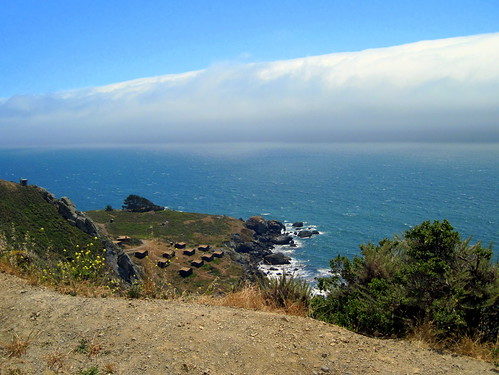
At Muir Woods, the girls were given Junior Ranger badges and they recorded their observations in notebooks. A wary Chipmunk is under study:
An endangered Leopard Lily grows in John Muir Woods: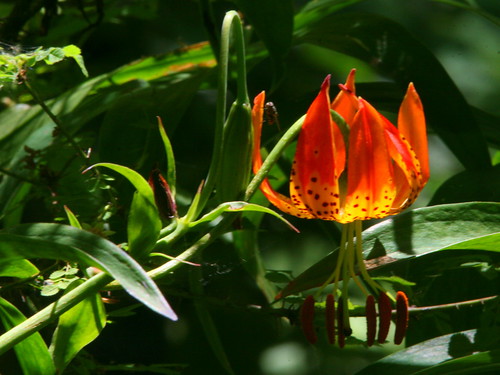
(This series of three posts begins at this link)













